Croton alabamensis
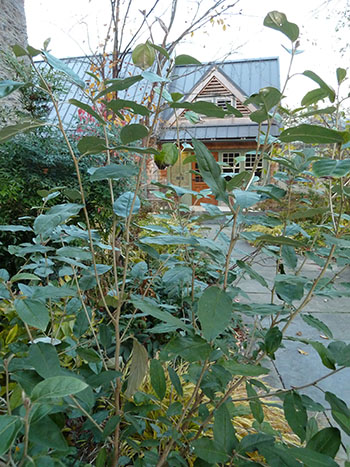 Have you ever passed judgment on a plant based on a name association? Snubbed a Prunus for instance because it reminds of you of Bradford pears? Dismissed every Ilex because most are prickly? I did such a thing with Croton alabamensis.
Have you ever passed judgment on a plant based on a name association? Snubbed a Prunus for instance because it reminds of you of Bradford pears? Dismissed every Ilex because most are prickly? I did such a thing with Croton alabamensis.
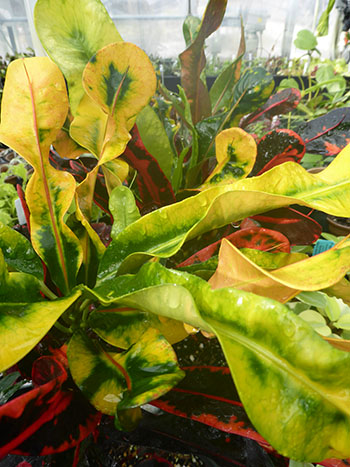
Many are familiar with croton (Codiaeum), the vibrant colored houseplant with leaves ablaze in shades of yellow, orange, red, green, and pink. photo credit: J. Coceano
Many are familiar with croton (Codiaeum), the vibrant colored houseplant with leaves ablaze in shades of yellow, orange, red, green, and pink. While the plants are no doubt colorful, they are not the best candidates for dry, low-light office situations, the environment most crotons are destined to call home.
Crotons require bright light and high humidity. If such an environment isn’t met, plants quickly sulk by defoliating. I have been burned too many times by crotons. Thus, I immediately disregarded Croton alabamensis as it shared a common name with a finicky tropical houseplant. I have since come around and am here to make amends by extolling the virtues of a Croton.
To a casual observer, Croton alabamensis doesn’t scream “look at me!” Green to olive-green semi-evergreen leaves cloak this forest understory shrub. Leaves, when crushed, are said to smell of apples and bananas. Plants, often multi-stemmed, can reach 5’-10’ in height with a comparable spread.
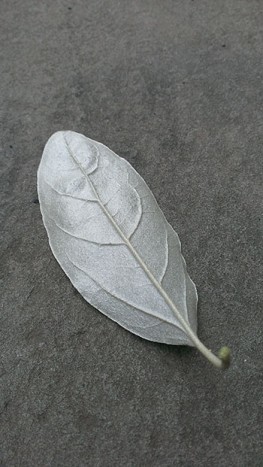
The silver underside of the Croton alabamensis leaf is quite reflective and especially noticeable on windy days. photo credit: J. Coceano
Passing by this same plant on a breezy day yields an entirely unexpected experience. The underside of each leaf is covered in a metallic-silver coating generally not visible to the eye. It is uncertain what function such a coloration serves. The silver underside is quite reflective and especially noticeable on windy days. Small yellow-green flowers appear in spring. Croton alabamensis is a member of the spurge family, Euphorbiaceae, evident by the milky sap and poinsettia-like flower clusters.
The Alabama croton is a native indigenous shrub found in a limited geographic region. It is believed that two distinct populations exist. One, C. alabamensis var. alabamensis, is known to exist in only a few counties in Alabama. Another population, C. alabamensis var. texensis is found in Texas. Most references don’t differentiate between the two populations.
Wild populations are found in woodland settings, particularly under thin canopies. Plants are adaptable to a range of soils. A specimen in the Terry Shane Teaching Garden is sited in a sunny location along a bluestone path. Shade from the most intense afternoon sun is provided from nearby deciduous trees.
The open growth habit lends itself well to mixing and intermingling with neighboring plants. Helleborus, Pollia japonica, and Syneilesis aconitifolia weave themselves amongst the Alabama croton’s branches. Prune to shape and remove weak, spindly branches. Low branches touching the ground may air layer, or form roots where the branch makes contact with the soil.
Croton alabamensis may be tricky to procure. Several online sources list the plant, but often quickly sell out of stock. Hopefully greater awareness will lead to increased availability as this curious plant is certainly worthy of inclusion in the garden.





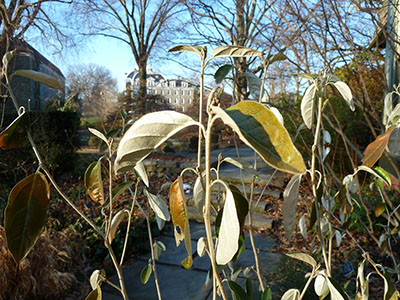
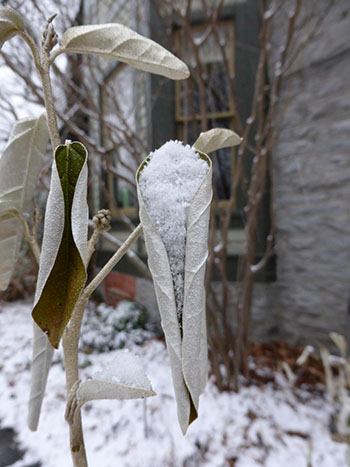
Sally Price
Posted at 12:05h, 25 FebruaryFabulous plant. If in Birmingham, Al, the Birmingham Botanical Gardens often has it for sale at their plant sales.
Eve Thyrum
Posted at 12:27h, 25 FebruaryWell stated and well written Josh! As you said, it may be tricky to procure, however ………. Scott comes to the rescue, they will be selling Croton alabamensis at their upcoming plant sale in September!
Drew Pegon
Posted at 11:47h, 26 FebruaryDefinitely a native shrub worthy of much wider use in the Philadelphia area. The several in my garden I stumbled upon a couple of years ago at the Scott Arboretum’s Members’ Plant Exchange & Sale. Held every year in early May, it’s a great opportunity to make your own discoveries among the thousands more tried and true plants contributed by our Members.